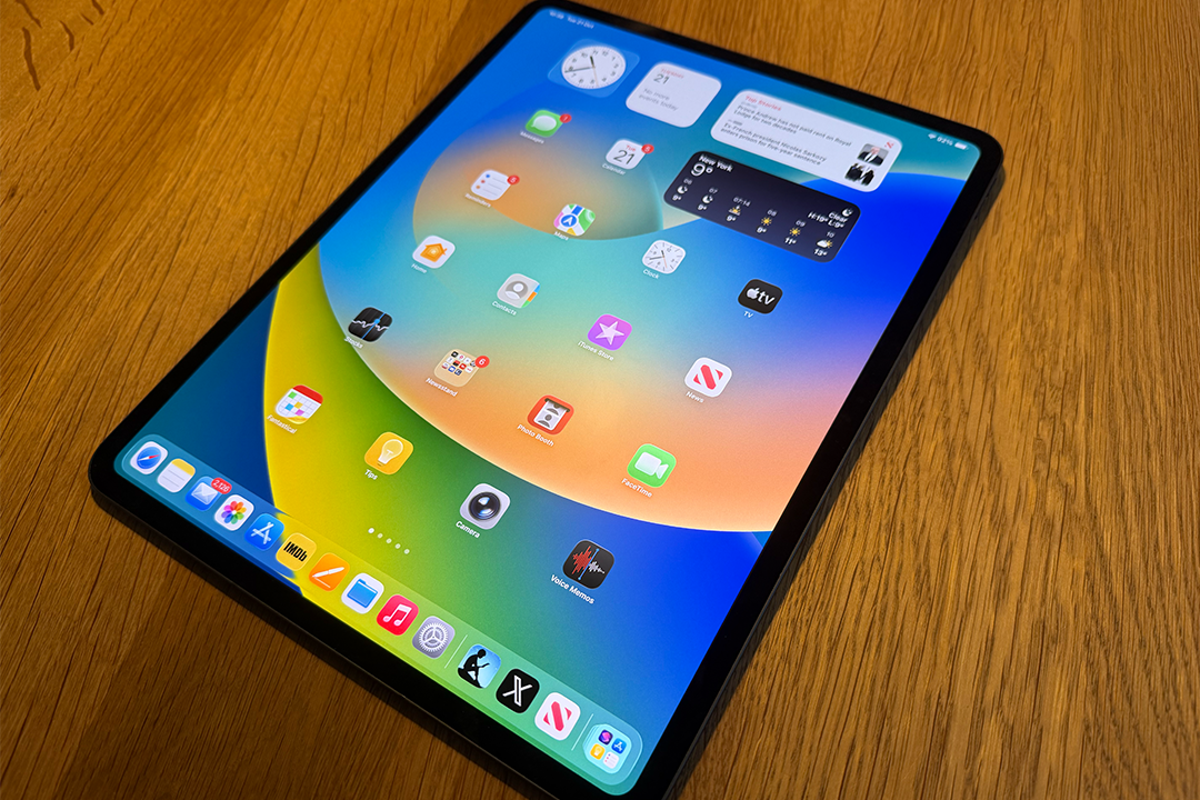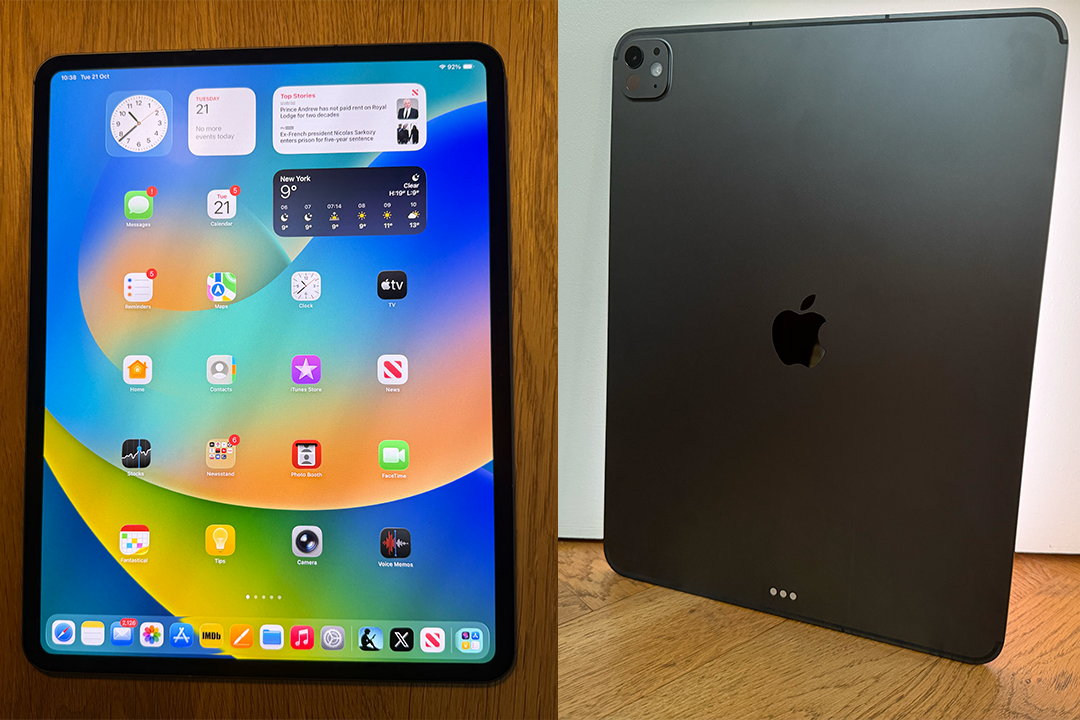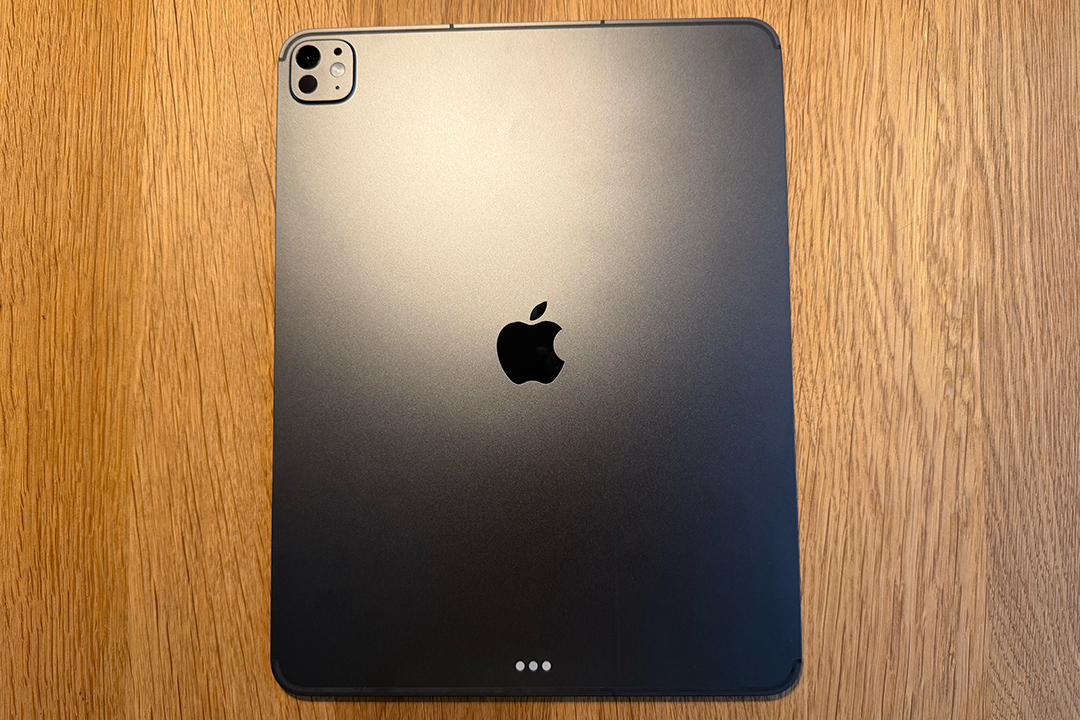
Apple’s next iPad Pro is almost here, and at first glance, you’d be forgiven for thinking nothing’s changed versus last year’s iPad Pro M4. The same thin, flat design. The same silver and space black finishes. Even the same price: £999 for the 11in model and £1,299 for the 13in. But under the surface, it’s had quite the overhaul.
This year’s iPad Pro runs on Apple’s new M5 chip, the same one powering the latest MacBook Pro and Apple Vision Pro headset. There’s faster memory, extra RAM and a new wireless chip with an Apple-designed modem. Basically, all the stuff you don’t see, but definitely feel once you start using it.
And yes, it still comes in two sizes (11in and 13in), with wifi or wifi and cellular models and storage that goes up to 2TB. It’s the most powerful iPad Apple’s ever made, but whether that power actually changes how you use it is another question entirely. I’m one of the first to get my hands on Apple’s new tablet. Is it worth the investment?
How I tested

I’ve been using the new iPad Pro with the M5 chip since the tablet was announced by Apple on 15 October, assessing everything from the simplicity of set-up onwards.
- Design: While this new model looks the same as the previous model from 2024, I still paid attention to the thickness and feel of the tablet in my hand. I also looked at the ergonomics when it came to taking photos.
- Performance: Since there’s a powerful new processor, I checked out performance on everyday tasks like email, web-surfing and so on, right up to more demanding apps and high-resolution games.
- Display: I looked at how bright, contrast-rich and immersive the 13in OLED display looks, and judged if the nanotexture finish is an option worth having.
- Charging and battery life: Since fast-charging is now a capability, I checked out how long the battery lasted and how quickly it re-charged itself.
Why you can trust IndyBest reviews
As The Independent’s review section, IndyBest brings readers honest, thorough and unbiased opinions, based on real-world, hands-on testing. David Phelan is The Independent’s technology critic with decades of experience assessing the biggest and buzziest tech launches. Having tested everything from the iPad mini to the iPad Air, he knows Apple’s iPad line-up inside out, so he knows what makes a new model worth (or not worth) the upgrade.
iPhone Air review: ‘The most beautiful phone yet’
Apple Watch Series 11, Ultra 3 and SE3 review: Which smartwatch should you buy?
New iPad Air review: A powerful, immersive, lightweight beauty
Best Apple Black Friday deals 2025: Early offers on AirPods, iPads and more
I got my hands on the Apple iPhone 17 Pro and Pro Max, here’s my full review
Apple iPad Pro M5

Rear camera: 12 MP wide
Front camera: 12MP
Processor: Apple M5
Display: 11in, 13in
Resolution: 2,420 x 1,668px, 264 pixels per inch (11in), 2,752 x 2,064px, 264 pixels per inch (13in)
Storage: 256GB/512GB/1TB/2TB
Battery: Up to 10 hours
Dimensions: 249.7mm x 177.5mm x 5.3mm (11in), 281.6mm x 215.5mm x 5.1mm (13in)
Weight: 444g (11in), 579g (13in)
Why we love it
- Super-slim design
- Faster-than-ever performance
- Useful fast charging
Take note
- Pricey if you choose extra storage or accessories
- For many, iPad Air is enough
The new Apple iPad Pro with M5 processor comes in two sizes. Other than size and price, there are no differences in performance or capabilities between the two. I’m reviewing the 13in model but if you prefer something smaller, everything but the thickness, screen size and price are the same.
As before, the 13in model is startlingly thin, 5.1mm thick, which means it continues to be the thinnest product Apple has made. Ever. It remains sturdy and flex-free as you handle it. The 11in model is slightly thicker, though at 5.3mm it’s hardly noticeable. Both sizes are preposterously light, as well.
The iPad Pro is unlocked with Face ID. The camera that recognises your face sits on the long edge of the tablet. Until the last model, it was on the shorter side. There had been rumours that this time around there would be two cameras, but that proved false. The benefit of the camera where it sits is that Face ID works better if you’re using the iPad in landscape orientation, as you might be for video conferencing, for instance.
Read more: 10 best tablets 2025, tried and tested
The iPad Pro only has one rear camera, also like last time, but the iPad has never been the best way to take photos, as it's ergonomically no match for a standalone camera, or even a more palm-friendly device like a smartphone. Where it excels is at scanning documents, for instance.
Like with the iPhone Air, just released in September, there’s no longer a SIM card tray in the models with cellular connectivity. In previous models, the SIM card would have slipped into this, but now this is handled through eSIM rather than physical cards.
iPad Pro M5: Display
Like last year’s iPad Pro, Apple has put an OLED screen in the new tablets, to overcome the downside that faces OLED (it isn’t as bright as LCD). Apple has tandem OLED, which uses two OLED displays and combines the light from each of them to deliver much greater brightness. The result is a rich and detailed screen with plenty of brightness.
This is a great display, but it looks better, way better, if you can spring for the nano-texture option. This costs an extra £100 and is only available on models with either 1TB or 2TB storage. The system works to scatter ambient light to reduce glare – though the other versions of the iPad all have an anti-reflective coating.
Regular iPad displays look great, but the nano-texture is downright stunning. If you want an iPad Pro with higher storage, I’d say choosing the nano-texture option is worth the extra cash.
iPad Pro M5: Performance
The first big change this time around is the Apple M5 processor, designed to be power-efficient enough to maintain battery life, but to work much faster than the M4 processor that was in the last version.
At first glance, that might sound like overkill. Who really needs that much speed, you might wonder. The first big reason is AI. As our use of AI apps and programs increases, a super-fast processor will become increasingly important. The M5 chip is designed to work better for AI, with neural accelerators in the graphics (a new neural engine designed to speed up AI features). One example of this is summarisation. A page of lecture notes can be summarised much more quickly than before. It also means that tasks involving AI, such as complex processes in advanced apps like Final Cut Pro, are speedily achieved.
But what about regular apps? There are plenty of processes which happen in less demanding apps that can now happen faster. The result is that everything on this tablet happens at speed, and the improved power means games with detailed and superior graphics can play in glorious detail, without the iPad getting warm.

The M5 chip is assisted by extra RAM: for the 256GB and 512GB models, this has gone up by 50 per cent compared to last year’s models to 12GB, while the 1TB and 2TB options have 16GB of RAM, as they did before. There’s even new storage technology, which delivers for read/write storage speeds that are up to double what they were before.
Together, these changes, led by the M5 chip, make this a blazing-fast iPad. And this is without diminishing the battery life, which remains what Apple calls ‘all-day’. This seems fair. The way we use tablets is different from phones, so the 10 hours or so that the iPad Pro lasts between charges is enough for a day.
The iPad Pro is capable of fast charging – the first iPad to have this – and it means that if you have a 60W power adapter or faster (or Apple’s dynamic power adapter with 60W max, Apple says), it will charge up to 50 per cent in half an hour or so. If you’re waiting to use the iPad, then when it comes to charging, faster is always better.
iPad Pro M5: Accessories
The two key accessories for the iPad Pro are the Magic Keyboard and Apple Pencil. Neither has been updated in terms of hardware. Still, both are worth considering. The Magic Keyboard costs £299 (Apple.com) for the model that fits the 11in iPad Pro, and £349 (Apple.com) for the larger size . It’s expensive but it’s a handsome and highly effective keyboard that – especially with the latest iPad software – turns your iPad into something close to a touchscreen laptop, with effective multi-window capabilities. The Keyboard includes a row of function keys with automatic backlighting. The hinge and keyboard surround are made of aluminium, which adds to the premium feel (and price tag).
The Apple Pencil is also compatible. You need either Apple Pencil with USB-C (£79, Apple.com), which charges with a USB-C cable or Apple Pencil Pro (£129, Apple.com), which charges from the magnetic charging pad on the side of the tablet. Both versions attach magnetically to the iPad Pro. The Pencil Pro has extra features, such as Find My, which is highly useful if you’re as good at losing things as I am.
Buy now £1299.00, Amazon.co.uk
Should you buy the Apple iPad Pro M5?
Last year’s iPad Pro upgrade brought a new dazzlingly thin design, debuted an OLED screen and rounded off the package with speedy performance. The latest update matches the look but offers a major speed increase compared to the last model. That said, the 2024 version was plenty fast, too, so if you have that, there’s no urgent need to upgrade.
As AI usage becomes more prevalent, though, the AI-leaning excellence of the 2025 version will gain importance. And even sooner than that, you can expect gaming to look even better thanks to the M5 chip.
The OLED display is gorgeous, though if you have the larger-storage model, the nanotexture option makes a great difference. That said, if you’re buying an iPad Pro with 1TB storage, plus nanotexture, plus Pencil and keyboard, the price climbs quickly.
Overall, for users coming from an earlier iPad Pro than last year’s model, or any other iPad, this new version is so much better in terms of design, speed, OLED display, in every way, actually, that it’s a tempting purchase. The iPad Air still has a lot going for it, but the Pro beats it, and every other tablet out there.
You can also read my full review of the iPad Air







